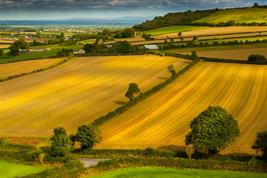25.10.2023

The EU CAP Network Focus Group has released its final report and several publications on enhancing biodiversity on farmland through High Diversity Landscape Features (HDLFs). These features contribute significantly to biodiversity, yields and community well-being.
High Diversity Landscape Features are natural or semi-natural areas of different sizes found in agricultural landscapes. They may originate from traditional land use practices or have been introduced recently. They have deep historical and cultural roots in European agricultural landscapes. However, they are threatened by the rise of intensive agriculture that promotes cheap food. The focus group identified many successful practices for creating and maintaining HDLF in different settings. Examples include agroforestry hedgerows in France, biodiversity strips in Austrian vineyards, water ponds in Italian pastures, and dry stone walls in Croatian agricultural areas.
Group members identified existing HDLFs in different farming systems and climates, highlighting their socio-economic and environmental benefits in addition to their positive impact on biodiversity. There are opportunities to introduce more HDLFs to increase habitat diversity, coverage and connectivity. A range of traditional and modern practices, success stories, capacity building opportunities and available support can facilitate this.
However, the group recognized that there are barriers to widespread adoption. These include technical, economic, social, and psychological factors, such as land use norms, local availability of planting materials, high costs for smallholder farmers, and lack of motivation among larger farmers. These barriers result in increased workloads and more. The group also highlighted the need to improve knowledge sharing and to explore the economic and climate change co-benefits of HDLF.
Based on the work of the focus group, research needs and ideas for working groups were identified. EU Member States can use these findings to advance research and policy development.
Further information:
